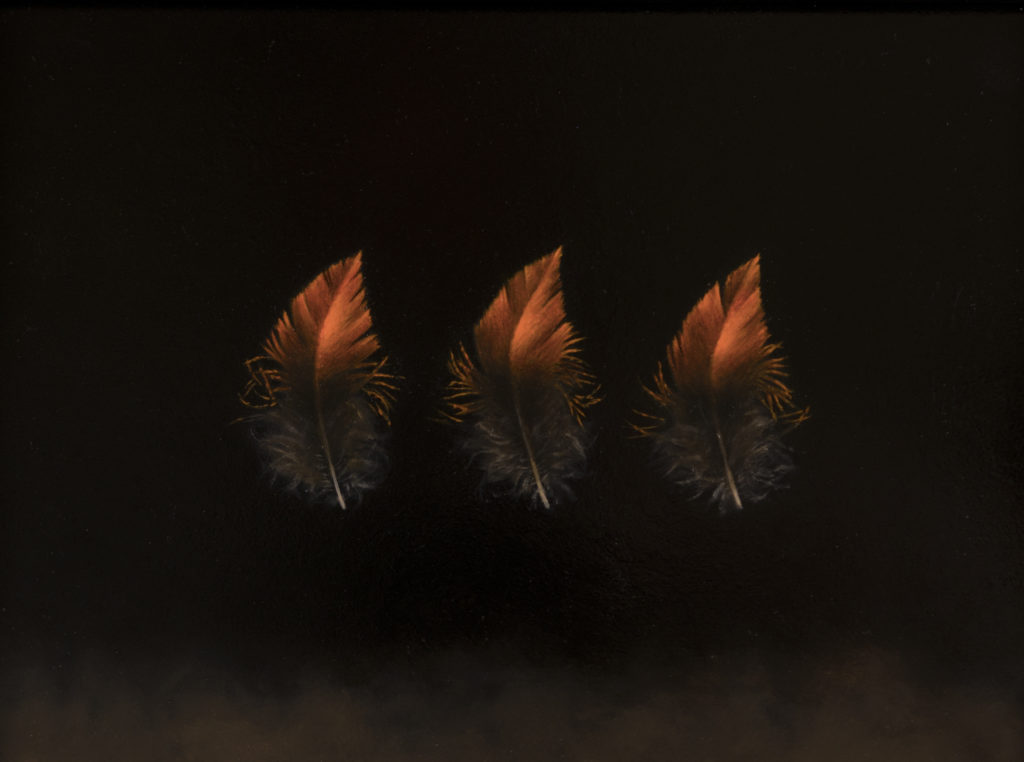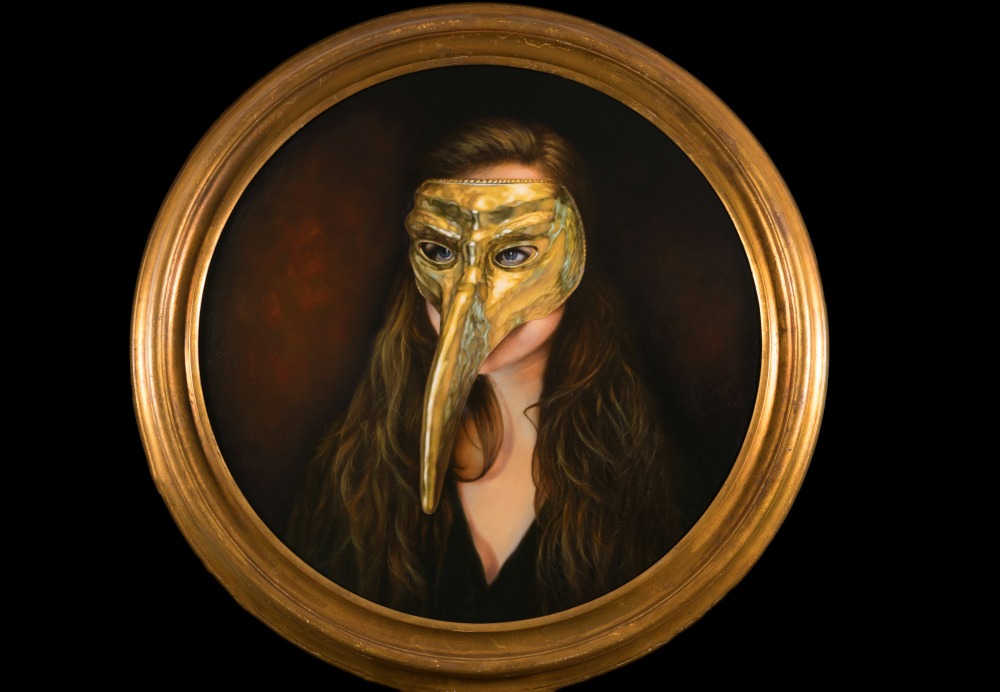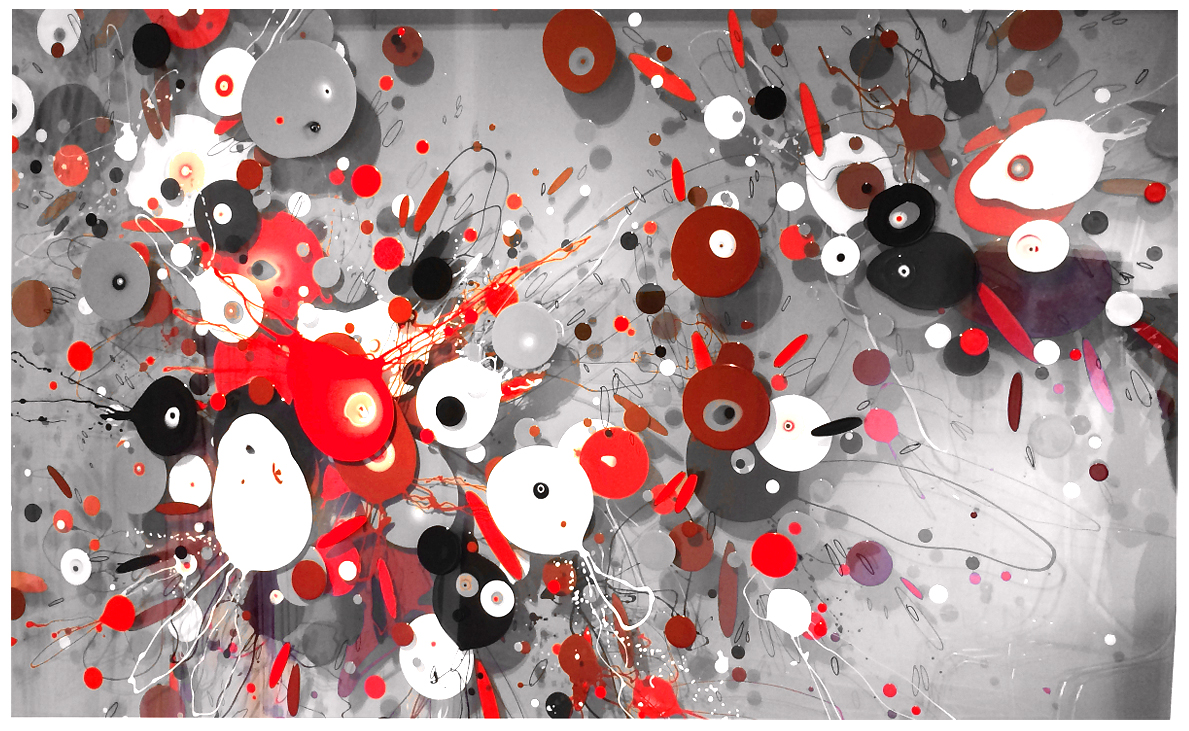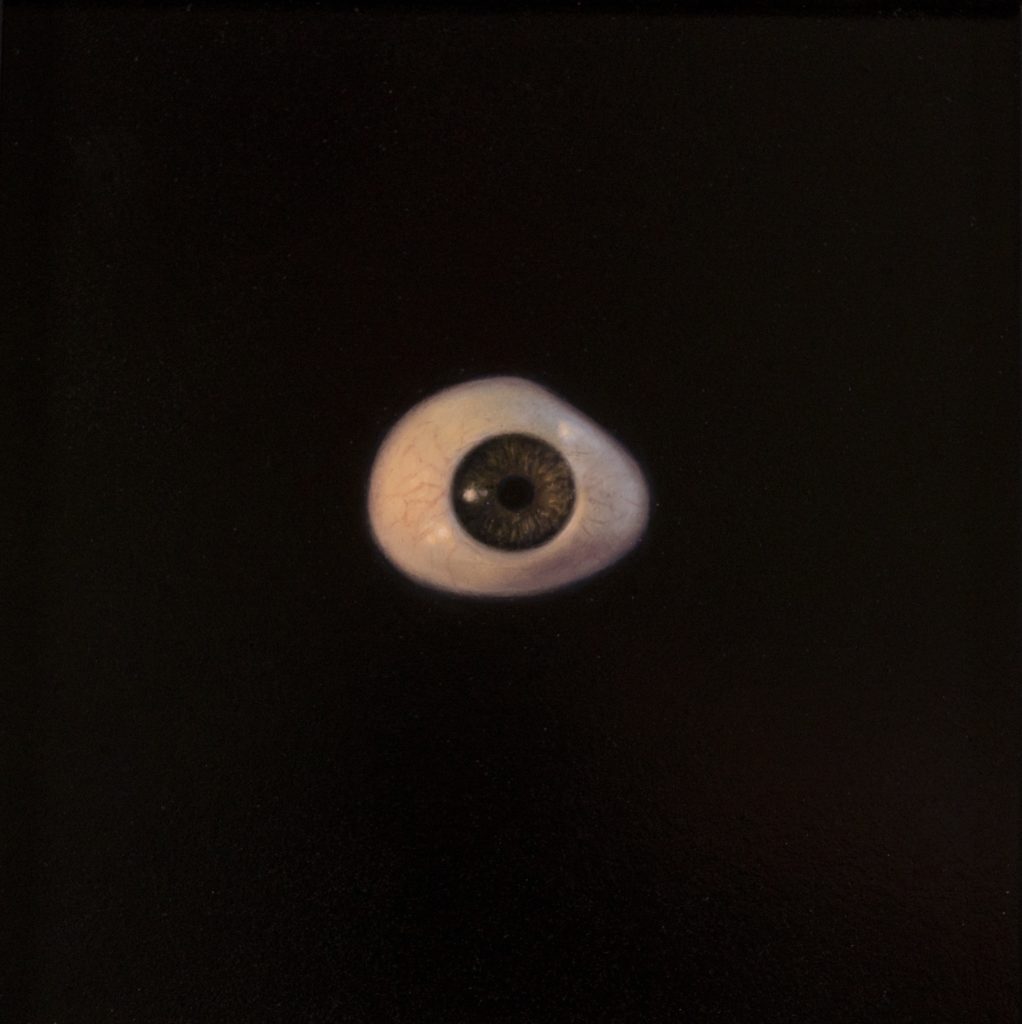 Melissa Basham‘s art often walks the thin line between dark and dreamy, in the form of eerily life-like paintings. With stark imagery against dark backdrops that subdue you from distraction and quickly draw you in, Basham’s paintings are both beautiful and bone-chilling.
Melissa Basham‘s art often walks the thin line between dark and dreamy, in the form of eerily life-like paintings. With stark imagery against dark backdrops that subdue you from distraction and quickly draw you in, Basham’s paintings are both beautiful and bone-chilling.
Her artistic journey started with a natural inclination towards painting, punctuated by her eventual surrender to realism over abstract work, and has developed by way of a chronic autoimmune disease that has made her keenly aware of mortality, another element that comes through in her work.
Here, Basham talks with CommonCreativ about her appreciation for shiny and imperfect things, how she uses darkness to focus on her subjects, and how the ritual and pageantry of early years spent in Catholic school continue to inspire her work.
CommonCreativ: What initially sparked your interest in art?
Melissa Basham: It was always something I did for fun as a child. My mom bought giant rolls of paper from my hometown newspaper, and I would roll the paper out on the floor and draw. It’s funny, but I really loved paint-by-numbers, especially the smell of the oil paint. In a way, I was a little like an only child since I’m a bit younger than my siblings, and art was a way to occupy myself. I also took some group lessons as something to do after school. I was pretty active about making things in my youth, but I only started working seriously in my 40s.
CC: How did you develop your personal style?
MB: In grade school, we were presented with pictures of paintings and told to copy them as closely as we could, so I drew and painted realistically from the beginning. I went back to college after dropping out for a while, and I really wanted to work much looser, maybe even in abstraction. All of my work would start loose, but then I would end up frustrated and would have to tighten it up. It just wasn’t natural for me, and my pieces were weak. A professor argued several times with me that he thought I was a realistic painter and there was no reason to fight it. I finally gave up arguing and embraced the fact that I was a terrible abstract artist, but maybe a decent realist artist.
CC: What inspires your work?
MB: Imperfection. Shiny things. Delicate things. Finding beauty in unexpected places. Objects that show a long history by obvious wear. So much in nature.
CC: Can you tell us about your process?
MB: I work from both life and photographs. My paintings are always on panel because it’s easier to get details down without the interference of the canvas weave. I work in a lot of thin layers, letting each one dry before applying the next. When I draw, it’s usually on a medium-toothed paper because I like to get a lot of texture to them. Over the past few years, I’ve added more color to my subjects and suspended them on a dark background. It’s a way of putting focus on the subject without any distractions.
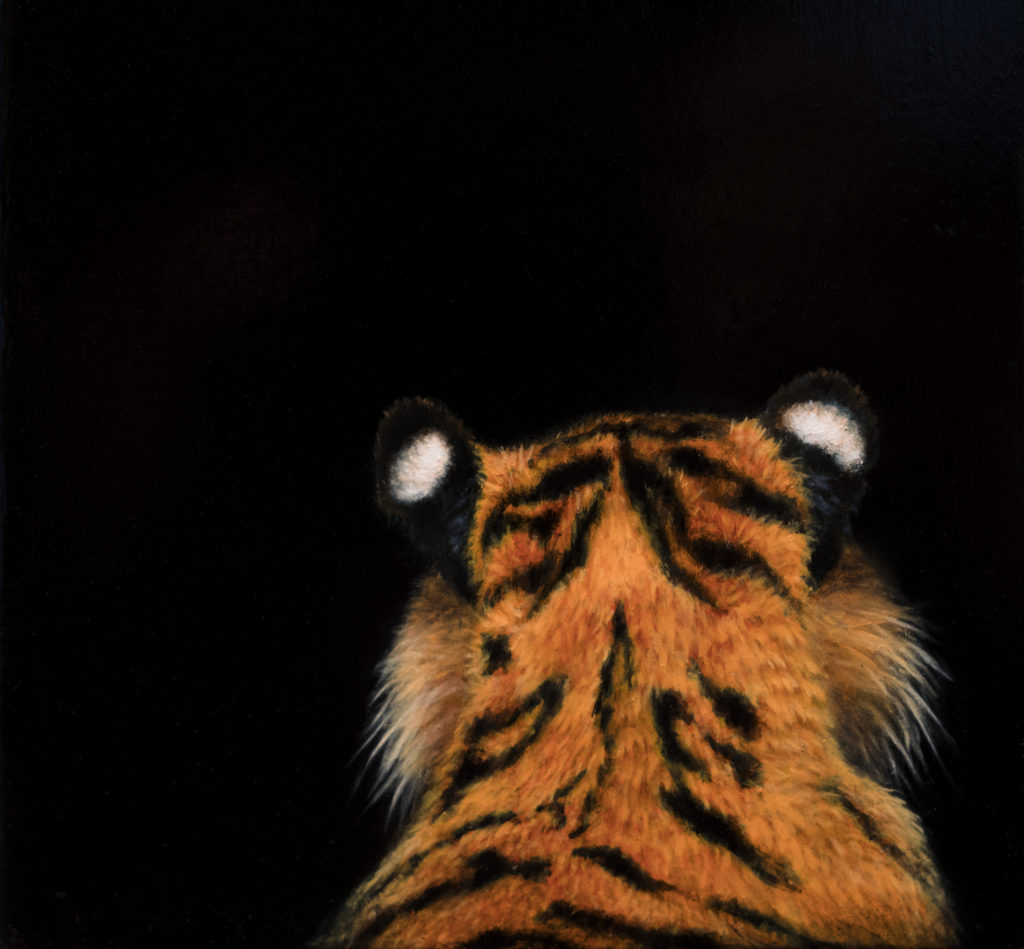 CC: From where do you think your dark, dreamy aesthetic comes?
CC: From where do you think your dark, dreamy aesthetic comes?
MB: I think growing up Catholic and going to Catholic school from kindergarten to eighth grade started it. There’s a lot of drama there — scores of saints in flowing robes, martyrs dying in creative and gory ways, the sheer fright of angering nuns and priests. The ritual and pageantry of the mass is incredible, and it had a huge visual effect on me. I also have had an auto-immune disease for over 20 years, and being chronically ill definitely affects one’s psyche. It’s made me angry, heartbroken, thankful, and has always made me keenly aware of mortality.
CC: What are your favorite types subjects of draw and paint?
MB: The family of moths called Saturniidae has been a favorite for a while. They only live about a week in their adult forms, so their only goals are to mate and lay eggs during that time — they don’t even have a mouth to eat. Also broken, worn, or cracked dolls from the 1920s. I find a lot of beauty in their flaws. Dramatic ladies showing their scars and still [being] around after 90 years.
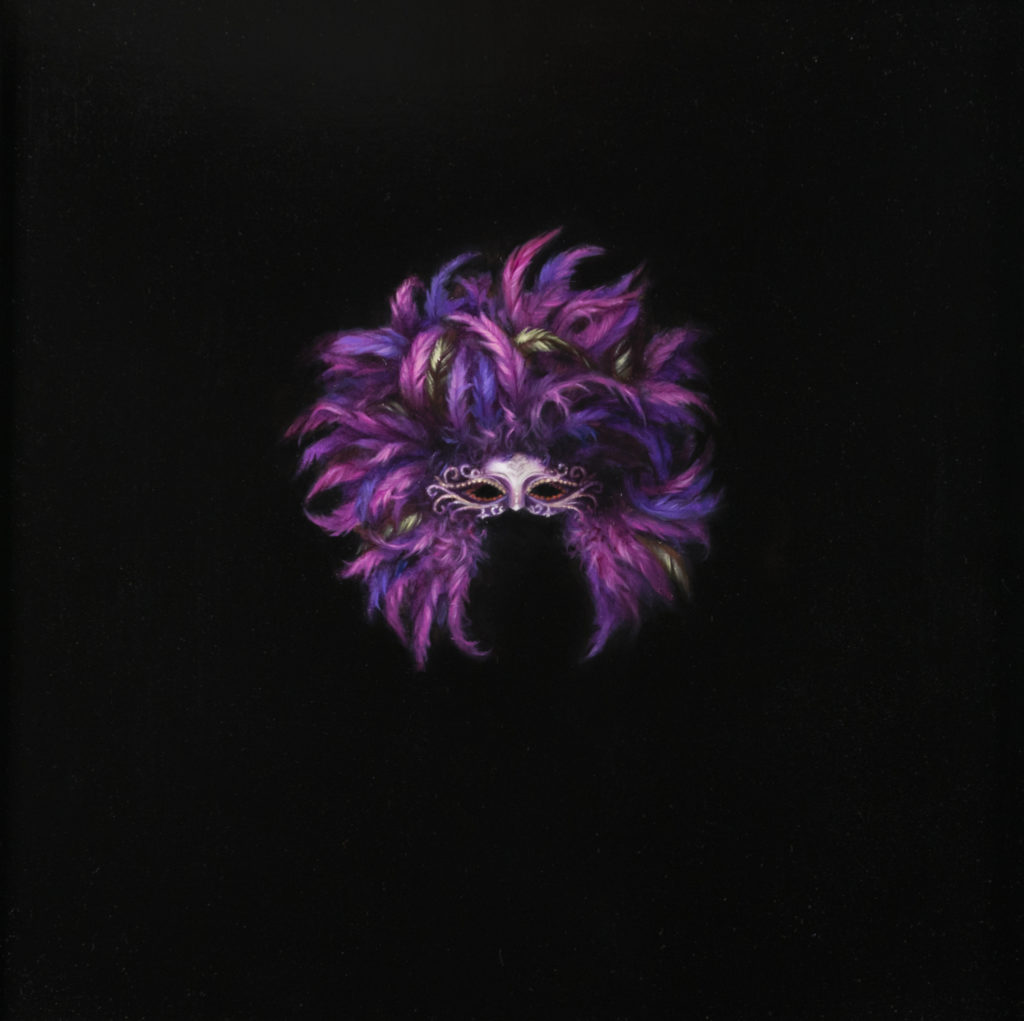 CC: What message do you hope your work conveys?
CC: What message do you hope your work conveys?
MB: I paint things that I visually enjoy or that I have some sort of reverence for. I don’t really have a message, but I’m open to the possibility that maybe I’m trying to say something that I’m just not quite aware of.
CC: What project or piece are you most proud of creating?
MB: For me, I think it’s more about a sense of satisfaction instead of pride. Some pieces are more successful than others, and those are the ones I share with people. People may not realize that artists likely have a lot of pieces that never see the light of day. I have several pieces that just never came together even after much effort, but in the end, I get a different kind of satisfaction when I sand them out.
CC: What kind of art appeals to you personally?
MB: I have a lot of respect for artists that utilize skill. I’m not speaking only of representational art — just art that is well done. Also, right now I find that I really enjoy art that makes me laugh.
CC: What do you think of Atlanta’s creative scene right now?
MB: Atlanta’s artists are genuinely supportive of each other, and that is something to be proud of. It’s a very active scene, always full of events and activities focused mainly on contemporary and conceptual artists, but less on representational artists. I feel there is room for all kinds of visual arts in Atlanta, and I hope that representational art will find more acceptance in the future here.
CC: What projects do you have coming up next?
MB: Art is cyclical for me, and I tend to make work for a while and then take long breaks where I don’t do any work at all. I had a solo show at Kibbee Gallery last November, and have only made two small drawings since then. I’m just now beginning to think about making work. Lately, I’ve been gathering some frames and looking at painting supplies, which are usually the beginnings of making art again.
CC: Your presence online seems to focus solely on your work without photos of you, the artist. Is there a reason you’ve decided not to include yourself beside your work?
MB: I don’t enjoy calling a lot of attention to myself.
You can follow Melissa’s work on Instagram.

